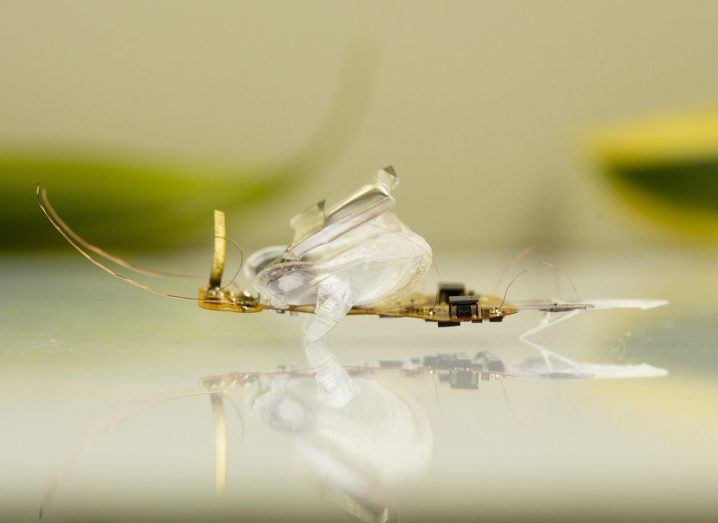In the future, swarms of tiny flying soft robots could zip through the sky, performing various tasks such as monitoring the environment, remote repairs, perhaps even pollination. In Switzerland, engineers have recently demonstrated a new type of insect-like flying robots that may do just that. But don’t let their fragile appearance deceive you — these tiny bots are so strong they can resist being battered by a flyswatter.

Central to the proper functioning of this tiny soft robot, known as DEAnsect, are artificial muscles. Researchers at the École Polytechnique Fédérale de Lausanne (EPFL) in Switzerland fitted the thumbnail-sized robots with dielectric elastomer actuators (DEAs) — hair-thin artificial muscles — which propel the artificial insects at about 3cm/second through vibrations.
Each DEA contains an elastomer membrane sandwiched between two soft electrodes. When a voltage is applied, the electrodes come together, compressing the membrane; once the voltage is switched off, the membrane returns to its original size. Each of the robot’s legs has three such muscles.
The vibrations caused by switching the artificial muscles on and off (up to 400 times a second) allows the DEAnsect to move with a high degree of accuracy, as demonstrated in experiments in which the robots followed a maze (shown in the video).
These extremely thin artificial muscles allowed the entire design to be streamlined in a very compact frame. The power source only weighs 0.2 grams, while the entire robot, battery and other components included, weighs one gram.
“We’re currently working on an untethered and entirely soft version with Stanford University. In the longer term, we plan to fit new sensors and emitters to the insects so they can communicate directly with one another,” said Herbert Shea, one of the authors of the new study published in Science Robotics.









